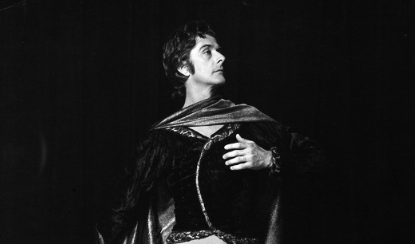
Australia’s ballet world said farewell this week to a figure whose influence shaped generations of dancers.
The passing of Garth Welch did not just close a chapter—it marked the final curtain call on a dynasty that once defined Australian ballet.
His life blended artistry, family and love in ways that set him apart from his peers.
Born in Brisbane on 14 April 1936, Garth Welch discovered his calling on the dance floor after an education at the Anglican Church Grammar School.
He began training under Phyllis Danaher before joining the Borovansky Ballet in 1954, quickly establishing himself as a performer of rare talent.
His career soon expanded overseas, where he studied under Vera Gsovsky and Dame Peggy van Praagh, and later immersed himself in modern dance with Martha Graham in 1966–67.
He performed with Western Theatre Ballet and the Grand Ballet du Marquis de Cuevas before returning to Australia, ready to help shape its dance identity.
Welch’s personal life was as captivating as his career.
His marriage to fellow Australian Ballet Principal Dancer Marilyn Jones created a partnership that enthralled audiences both on and off the stage.
Together they embodied one of the company’s most admired duos, their chemistry helping define Australian ballet’s golden years.
The Australian Ballet's golden era
When The Australian Ballet was founded in 1962, Garth Welch was personally invited by founding artistic director Dame Peggy van Praagh to join as a principal dancer.
Along with fellow principals like Marilyn Jones, Welch helped establish the company's reputation during its crucial early years, performing in all the major classical ballets and creating roles in uniquely Australian works like Sir Robert Helpmann's 'The Display.'
Welch’s performances were legendary.
He created the role of the Outsider in Sir Robert Helpmann’s The Display during its 1964 premiere and dazzled as both Albrecht and Hilarion in Giselle.
Source: Youtube/John Hall
Audiences admired his dramatic intensity and the way he carried classical ballet into new artistic territory.
His talents extended beyond the stage to choreography, beginning with Variations on a Theme in 1964.
He went on to create works including Othello (1968), Images (1974), KAL (1979), and The Tempest (1983), alongside pioneering full-length ballets for the West Australian Ballet.
In 1981, his ballet Peter Pan gave the company its first sell-out season, proving Australian stories could rival European classics.
Welch’s greatest achievement may have been the legacy he left through his family.
With Jones, he raised two sons who carried forward his artistry—Stanton Welch, now Artistic Director of Houston Ballet, and Damien Welch, a former principal with The Australian Ballet.
In 2003, Stanton transformed Houston Ballet into a company of international reputation, while Damien upheld the family tradition at home in Australia.
Garth Welch's lasting contributions to Australian dance
- Helped establish The Australian Ballet as a world-class company from 1962-1973
- Created groundbreaking Australian ballets including 'The Display' and 'Othello'
- Served as artistic director of West Australian Ballet (1980-1982)
- Founding President of the Australian Institute of Classical Dance
- Raised two sons who became international dance stars
- Mentored countless dancers across more than 50 years
His personal story revealed both courage and compassion.
For more than fifty years, Welch shared his life with his partner Jak Callick, whose quiet support reflected the dancer’s deep commitment to love and authenticity.
It was a partnership progressive for its time, showing his ability to embrace both tradition and change.
Even in later life, Welch remained on stage.
He was acclaimed for his portrayal of Aschenbach in Graeme Murphy’s After Venice in 1984 and later appeared in musicals including How to Succeed in Business Without Really Trying (1993), and Nijinsky at Twilight (1998).
His influence stretched beyond performance.
As founding President of the Australian Institute of Classical Dance, he helped create strong pathways for training and accreditation.
In recognition of his service, he received the Order of Australia in 1981 and was later inducted into the Australian Dance Awards Hall of Fame in 2002.
His death on 2 September at age 89 came just as Australia also mourned the loss of fellow ballet pioneer Colin Peasley.
The passing of these two legends marked the end of a golden generation, but their influence remained alive in the artists they inspired.
Welch was not only a dancer for the elite but a familiar presence in Australian homes through appearances on In Melbourne Tonight with Bert Newton.
Through such appearances, he helped make ballet accessible to a wider audience.
His artistry was built not only on technique, but on love—for dance, for family, and for community.
What This Means For You
Garth Welch was more than a performer—he was one of the guiding forces who helped shape The Australian Ballet in its early years, giving the company the strength and recognition it needed to stand on the world stage.
Through his landmark works, he showed audiences that Australian ballet could rival the great classics from Europe while still telling our own stories. His legacy did not end with him, as his family continued carrying his passion across generations and into international theatres. Honoured for his contributions and remembered as a generous mentor, his influence still touches anyone who has ever admired the beauty of dance.
For those who grew up during ballet’s golden era, his passing is not just the loss of an icon, but the farewell of a familiar presence who brought grace and inspiration into our lives.
Vale Garth Welch AM—Dance Australia — Tribute highlighting Welch as a premier danseur whose artistry, generosity and vision shaped Australian ballet for more than six decades.
https://www.danceaustralia.com.au/news/vale-garth-welch-am
Garth Welch—Wikipedia — Biography covering his early life in Brisbane, career milestones, family, and honours.
https://en.wikipedia.org/wiki/Garth_Welch
Garth Welch—Oxford Reference — Overview of his training under Gsovsky, van Praagh, and Martha Graham, along with his dramatic stage roles.
https://www.oxfordreference.com/display/10.1093/oi/authority.20110803121637532
Vale Garth Welch AM (1936—2025) — Dance Informa Australia — Obituary detailing his choreography, directorship at West Australian Ballet, and works like Peter Pan, which achieved the company’s first sell-out season.
https://danceinforma.com.au/articles/vale-garth-welch-am-1936-2025/
Houston Ballet | Stanton Welch — Profile of Stanton Welch, Garth’s son, who became Artistic Director of Houston Ballet in 2003.
https://www.houstonballet.org/explore/artistic-staff/stanton-welch/
Vale Garth Welch, pioneering Australian dancer and choreographer — Limelight Arts — Coverage of Welch’s later stage career with Graeme Murphy’s Sydney Dance Company and musical theatre roles.
https://limelight-arts.com.au/news/vale-garth-welch-pioneering-australian-dancer-and-choreographer/
Two profound but different ballet legacies: vale Colin Peasley and Garth Welch — The Conversation — Reflection on the deaths of two Australian Ballet pioneers, marking the end of a golden era.
https://theconversation.com/two-pro...ies-vale-colin-peasley-and-garth-welch-264682
Vale Garth Welch—a towering figure whose artistry and love ensured Australian ballet would be remembered on the world stage.







